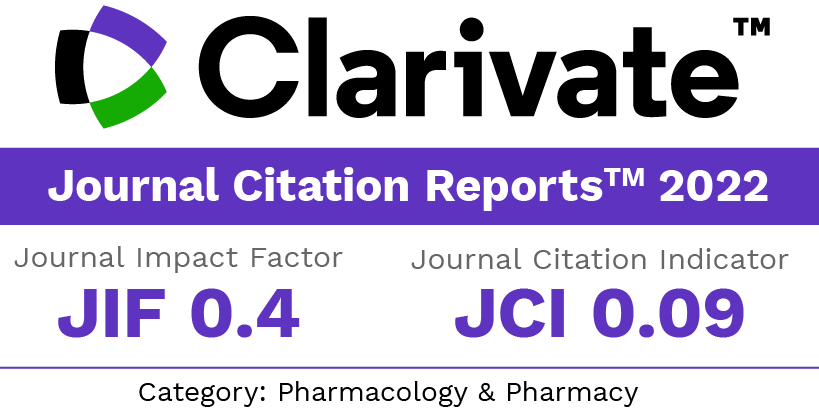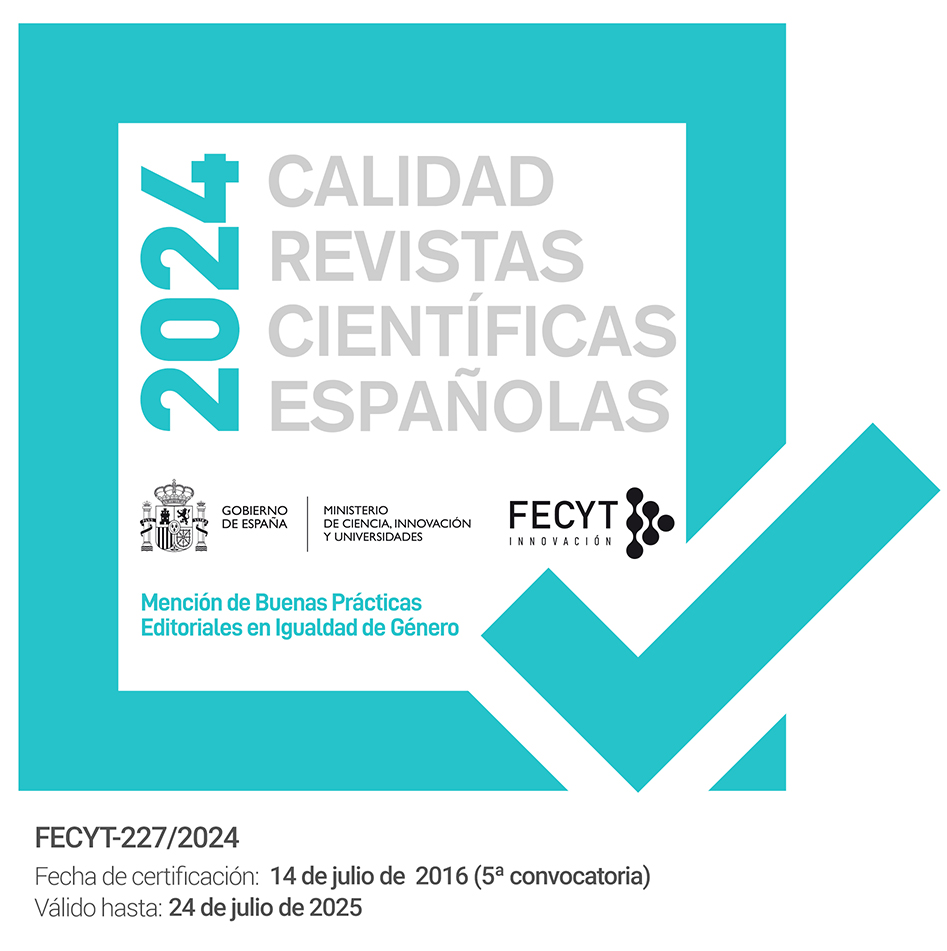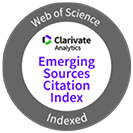La curcumina y sus derivados como posibles candidatos antivirales contra la viruela del mono (mpox): una revisión de estudios computacionales
DOI:
https://doi.org/10.30827/ars.v66i2.32423Palabras clave:
Antiviral, Curcumina, Viruela del mono, Mpox, CúrcumaResumen
Introducción: La viruela del mono (mpox) es una enfermedad infecciosa causada por el virus mpox que es motivo de preocupación sanitaria mundial porque el brote, a mayo de 2023, ha afectado a más de 80.000 personas en cientos de países. Actualmente, no existe un tratamiento específico, incluidos los antivirales, para los pacientes con mpox. Continúa la exploración de compuestos activos para mpox, uno de los cuales es la curcumina y sus derivados. La curcumina es un compuesto polifenólico que se encuentra predominantemente en la cúrcuma y que se ha documentado que tiene efectos antivirales. Por lo tanto, este estudio tiene como objetivo explorar estudios que investiguen el potencial de la curcumina y sus derivados como candidatos antivirales para atacar a la mpox.
Método: Se buscó literatura publicada desde su inicio hasta 2024 en ScienceDirect, PubMed, Scopus y Google Scholar. Las palabras clave utilizadas en esta búsqueda incluyeron cúrcuma, curcumina, tetrahidrocurcumina, demetoxicurcumina, bisdemetoxicurcumina, cúrcuma, viruela del mono y mpox.
Resultados: Los resultados de la búsqueda bibliográfica encontraron cinco estudios computacionales que involucran el compuesto curcumina y sus derivados, incluida la tetrahidroxicurcumina y la demetoxicurcumina. Todos los estudios demostraron que la curcumina y sus derivados tienen una mejor afinidad de unión con proteínas de mpox en comparación con el control de varios antivirales. La curcumina y sus derivados tienen un gran potencial para inhibir la replicación del virus mpox y modular el sistema inmunológico.
Conclusiones: Esta revisión concluye que la curcumina y sus derivados tienen potencial como candidatos antivirales para el mpox. Sin embargo, los estudios relacionados siguen siendo limitados y se limitan a estudios computacionales. Se necesitan más estudios preclínicos, experimentales y clínicos para confirmar su eficacia y mecanismos de acción.
Descargas
Citas
Kaler J, Hussain A, Flores G, Kheiri S, Desrosiers D. Monkeypox: A Comprehensive Review of Transmission, Pathogenesis, and Manifestation. Cureus. 2022;14(7):e26531. Doi: 10.7759/cureus.26531 DOI: https://doi.org/10.7759/cureus.26531
Anwar F, Haider F, Khan S, Ahmad I, Ahmed N, Imran M, et al. Clinical Manifestation, Transmission, Pathogenesis, and Diagnosis of Monkeypox Virus: A Comprehensive Review. Life. 2023;13(2):522. Doi: 10.3390/life13020522 DOI: https://doi.org/10.3390/life13020522
Thakur M, Das P, Sobti RC, Kaur T. Human monkeypox: epidemiology, transmission, pathogenesis, immunology, diagnosis and therapeutics. Mol Cell Biochem. 2023;478(9):2097–110. Doi: 10.1007/s11010-022-04657-0 DOI: https://doi.org/10.1007/s11010-022-04657-0
Zahmatyar M, Fazlollahi A, Motamedi A, Zolfi M, Seyedi F, Nejadghaderi SA, et al. Human monkeypox: history, presentations, transmission, epidemiology, diagnosis, treatment, and prevention. Front Med. 2023;10:1157670. Doi: 10.3389/fmed.2023.1157670 DOI: https://doi.org/10.3389/fmed.2023.1157670
Bragazzi NL, Kong JD, Mahroum N, Tsigalou C, Khamisy-Farah R, Converti M, et al. Epidemiological trends and clinical features of the ongoing monkeypox epidemic: A preliminary pooled data analysis and literature review. Journal of Medical Virology. 2023;95(1):e27931. doi: 10.1002/jmv.27931 DOI: https://doi.org/10.1002/jmv.27931
Mitjà O, Ogoina D, Titanji BK, Galvan C, Muyembe JJ, Marks M, et al. Monkeypox. The Lancet. 2023;401(10370):60–74. doi: 10.1016/S0140-6736(22)02075-X DOI: https://doi.org/10.1016/S0140-6736(22)02075-X
Ridho FM, Iqbal M, Laksono EP, Leal RSS. Oral and Perioral Manifestations in Monkeypox Patients: A Systematic Review of Case Reports and Case Series. Jurnal Kedokteran Diponegoro (Diponegoro Medical Journal). 2024;13(5):240–53. Doi: 10.14710/dmj.v13i5.42539 DOI: https://doi.org/10.14710/dmj.v13i5.42539
Sari M, Hairunisa N. A Review of the Monkeypox Outbreak in Indonesia in 2022. Jurnal Kedokteran Diponegoro (Diponegoro Medical Journal). 2022;11(5):268–74. Doi: 10.14710/dmj.v11i5.35895 DOI: https://doi.org/10.14710/dmj.v11i5.35895
Khan G, Perveen N. The 2022 monkeypox outbreak 1 year on: The 5 Ws. Reviews in Medical Virology. 2024;34(1):e2489. Doi: 10.1002/rmv.2489 DOI: https://doi.org/10.1002/rmv.2489
Shomuyiwa DO, Manirambona E. Monkeypox virus declared as a global health emergency: What next for Africa’s preparedness? Travel Medicine and Infectious Disease. 2023;53:102577. Doi: 10.1016/j.tmaid.2023.102577 DOI: https://doi.org/10.1016/j.tmaid.2023.102577
Rizk JG, Lippi G, Henry BM, Forthal DN, Rizk Y. Prevention and Treatment of Monkeypox. Drugs. 2022;82(9):957–63. Doi: 10.1007/s40265-022-01742-y DOI: https://doi.org/10.1007/s40265-022-01742-y
Cheema AY, Ogedegbe OJ, Munir M, Alugba G, Ojo TK. Monkeypox: A Review of Clinical Features, Diagnosis, and Treatment. Cureus. 2022;14(7):e26756. Doi: 10.7759/cureus.26756 DOI: https://doi.org/10.7759/cureus.26756
Sudarmaji N, Kifli N, Hermansyah A, Yeoh SF, Goh BH, Ming LC. Prevention and Treatment of Monkeypox: A Systematic Review of Preclinical Studies. Viruses. 2022;14(11):2496. Doi: 10.3390/v14112496 DOI: https://doi.org/10.3390/v14112496
Shamim MA, Padhi BK, Satapathy P, Veeramachaneni SD, Chatterjee C, Tripathy S, et al. The use of antivirals in the treatment of human monkeypox outbreaks: a systematic review. International Journal of Infectious Diseases. 2023;127:150–61. Doi: 10.1016/j.ijid.2022.11.040 DOI: https://doi.org/10.1016/j.ijid.2022.11.040
Singhal T, Kabra SK, Lodha R. Monkeypox: A Review. Indian J Pediatr. 2022;89(10):955–60. Doi: 10.1007/s12098-022-04348-0 DOI: https://doi.org/10.1007/s12098-022-04348-0
Shaker B, Ahmad S, Lee J, Jung C, Na D. In silico methods and tools for drug discovery. Computers in Biology and Medicine. 2021;137:104851. Doi: 10.1016/j.compbiomed.2021.104851 DOI: https://doi.org/10.1016/j.compbiomed.2021.104851
Patel SS, Acharya A, Ray RS, Agrawal R, Raghuwanshi R, Jain P. Cellular and molecular mechanisms of curcumin in prevention and treatment of disease. Critical Reviews in Food Science and Nutrition. 2020;60(6):887–939. Doi: 10.1080/10408398.2018.1552244 DOI: https://doi.org/10.1080/10408398.2018.1552244
Peng Y, Ao M, Dong B, Jiang Y, Yu L, Chen Z, et al. Anti-Inflammatory Effects of Curcumin in the Inflammatory Diseases: Status, Limitations and Countermeasures. DDDT. 2021;15:4503–25. Doi: 10.2147/DDDT.S327378 DOI: https://doi.org/10.2147/DDDT.S327378
Rahmani A, Alsahli M, Aly S, Khan M, Aldebasi Y. Role of Curcumin in Disease Prevention and Treatment. Adv Biomed Res. 2018;7(1):38. Doi: 10.4103/abr.abr_147_16 DOI: https://doi.org/10.4103/abr.abr_147_16
Ridho FM, Syachputra AJ, Fahrudin P, Nurhuda A, Nurliana N, Latuamury NS. In vitro and in vivo effects of curcumin on oral cancer: a systematic review. Current Biomedicine. 2024;2(2):101–15. Doi: 10.29244/currbiomed.2.2.101-115 DOI: https://doi.org/10.29244/currbiomed.2.2.101-115
Ridho FM, Syachputra AJ, Nur’aini AD, Ulfah K, Faqih M, Nurhuda A. Pre-clinical and clinical efficacy of curcumin as an anti-inflammatory agent for periodontitis. A systematic review. Revista Científica Odontológica. 2024;12(4):e222. Doi: 10.21142/2523-2754-1204-2024-222 DOI: https://doi.org/10.21142/2523-2754-1204-2024-222
Ardebili A, Pouriayevali MH, Aleshikh S, Zahani M, Ajorloo M, Izanloo A, et al. Antiviral Therapeutic Potential of Curcumin: An Update. Molecules. 2021;26(22):6994. Doi: 10.3390/molecules26226994 DOI: https://doi.org/10.3390/molecules26226994
Jennings MR, Parks RJ. Curcumin as an Antiviral Agent. Viruses. 2020;12(11):1242. Doi: 10.3390/v12111242 DOI: https://doi.org/10.3390/v12111242
Sharma A, Sharma T, Bhaskar R, Ola M, Sharma A, Sharma PC. Promising Potential of Curcumin and Related Compounds for AntiviralDrug Discovery. MC. 2024;20(6):597–612. Doi: 10.2174/0115734064277371240325105016 DOI: https://doi.org/10.2174/0115734064277371240325105016
Srivastava BBL, Ripanda AS, Mwanga HM. Ethnomedicinal, Phytochemistry and Antiviral Potential of Turmeric (Curcuma longa). Compounds. 2022;2(3):200–21. Doi: 10.3390/compounds2030017 DOI: https://doi.org/10.3390/compounds2030017
Mathew D, Hsu WL. Antiviral potential of curcumin. Journal of Functional Foods. 2018;40:692–9. Doi: 10.1016/j.jff.2017.12.017 DOI: https://doi.org/10.1016/j.jff.2017.12.017
Akash S, Hossain A, Hossain MdS, Rahman MdM, Ahmed MZ, Ali N, et al. Anti-viral drug discovery against monkeypox and smallpox infection by natural curcumin derivatives: A Computational drug design approach. Front Cell Infect Microbiol. 2023;13:1157627. Doi: 10.3389/fcimb.2023.1157627 DOI: https://doi.org/10.3389/fcimb.2023.1157627
Alagarsamy V, Shyam Sundar P, Raja Solomon V, Narendhar B, Sulthana MT, Rohitha K, et al. Pharmacophore modelling-based drug repurposing approaches for monkeypox therapeutics. Journal of Biomolecular Structure and Dynamics. 2023;41(20):10678–89. Doi: 10.1080/07391102.2023.2188428 DOI: https://doi.org/10.1080/07391102.2023.2188428
Banik A, Ahmed SR, Shahid SB, Ahmed T, Tamanna HK, Marma H. Therapeutic Promises of Plant Metabolites against Monkeypox Virus: An In Silico Study. Lin SC, editor. Advances in Virology. 2023;2023:1–16. Doi: 10.1155/2023/9919776 DOI: https://doi.org/10.1155/2023/9919776
Maurya VK, Kumar S, Maurya S, Ansari S, Paweska JT, Abdel-Moneim AS, et al. Structure-based drug designing for potential antiviral activity of selected natural product against Monkeypox (Mpox) virus and its host targets. VirusDis. 2024;35(4):589–608. Doi: 10.1007/s13337-024-00900-y DOI: https://doi.org/10.1007/s13337-024-00900-y
Rout M, Mishra S, Dey S, Singh MK, Dehury B, Pati S. Exploiting the potential of natural polyphenols as antivirals against monkeypox envelope protein F13 using machine learning and all-atoms MD simulations. Computers in Biology and Medicine. 2023;162:107116. Doi: 10.1016/j.compbiomed.2023.107116 DOI: https://doi.org/10.1016/j.compbiomed.2023.107116
Kumer A, Chakma U, Rana MM, Chandro A, Akash S, Elseehy MM, et al. Investigation of the New Inhibitors by Sulfadiazine and Modified Derivatives of α-D-glucopyranoside for White Spot Syndrome Virus Disease of Shrimp by In Silico: Quantum Calculations, Molecular Docking, ADMET and Molecular Dynamics Study. Molecules. 2022;27(12):3694. Doi: 10.3390/molecules27123694 DOI: https://doi.org/10.3390/molecules27123694
Xu Y, Wu Y, Wu X, Zhang Y, Yang Y, Li D, et al. Structural basis of human mpox viral DNA replication inhibition by brincidofovir and cidofovir. International Journal of Biological Macromolecules. 2024;270:132231. Doi: 10.1016/j.ijbiomac.2024.132231 DOI: https://doi.org/10.1016/j.ijbiomac.2024.132231
Hussain Y, Alam W, Ullah H, Dacrema M, Daglia M, Khan H, et al. Antimicrobial Potential of Curcumin: Therapeutic Potential and Challenges to Clinical Applications. Antibiotics. 2022;11(3):322. Doi: 10.3390/antibiotics11030322 DOI: https://doi.org/10.3390/antibiotics11030322
Lu J, Xing H, Wang C, Tang M, Wu C, Ye F, et al. Mpox (formerly monkeypox): pathogenesis, prevention and treatment. Sig Transduct Target Ther. 2023;8(1):458. Doi: 10.1038/s41392-023-01675-2 DOI: https://doi.org/10.1038/s41392-023-01675-2
Parnian R, Heydarifard F, Mousavi FS, Heydarifard Z, Zandi M. Innate Immune Response to MPOX Infection: Mechanisms and Immune Escape. J Innate Immun. 2024;16(1):413–24. Doi: 10.1159/000540815 DOI: https://doi.org/10.1159/000540815
Descargas
Publicado
Cómo citar
Número
Sección
Licencia
Derechos de autor 2025 Fiki Muhammad Ridho, Anisa Dias Nur'aini, Hamnah Al Atsariyah, Andika Julyanto Syachputra, Wisnu Eka Wardana, Andang Nurhuda

Esta obra está bajo una licencia internacional Creative Commons Atribución-NoComercial-CompartirIgual 4.0.
Los artículos que se publican en esta revista están sujetos a los siguientes términos en relación a los derechos patrimoniales o de explotación:
- Los autores/as conservarán sus derechos de autor y garantizarán a la revista el derecho de primera publicación de su obra, la cual se distribuirá con una licencia Creative Commons BY-NC-SA 4.0 que permite a terceros reutilizar la obra siempre que se indique su autor, se cite la fuente original y no se haga un uso comercial de la misma.
- Los autores/as podrán adoptar otros acuerdos de licencia no exclusiva de distribución de la versión de la obra publicada (p. ej.: depositarla en un archivo telemático institucional o publicarla en un volumen monográfico) siempre que se indique la fuente original de su publicación.
- Se permite y recomienda a los autores/as difundir su obra a través de Internet (p. ej.: en repositorios institucionales o en su página web) antes y durante el proceso de envío, lo cual puede producir intercambios interesantes y aumentar las citas de la obra publicada. (Véase El efecto del acceso abierto).
























